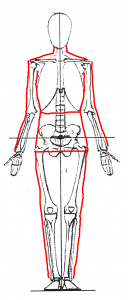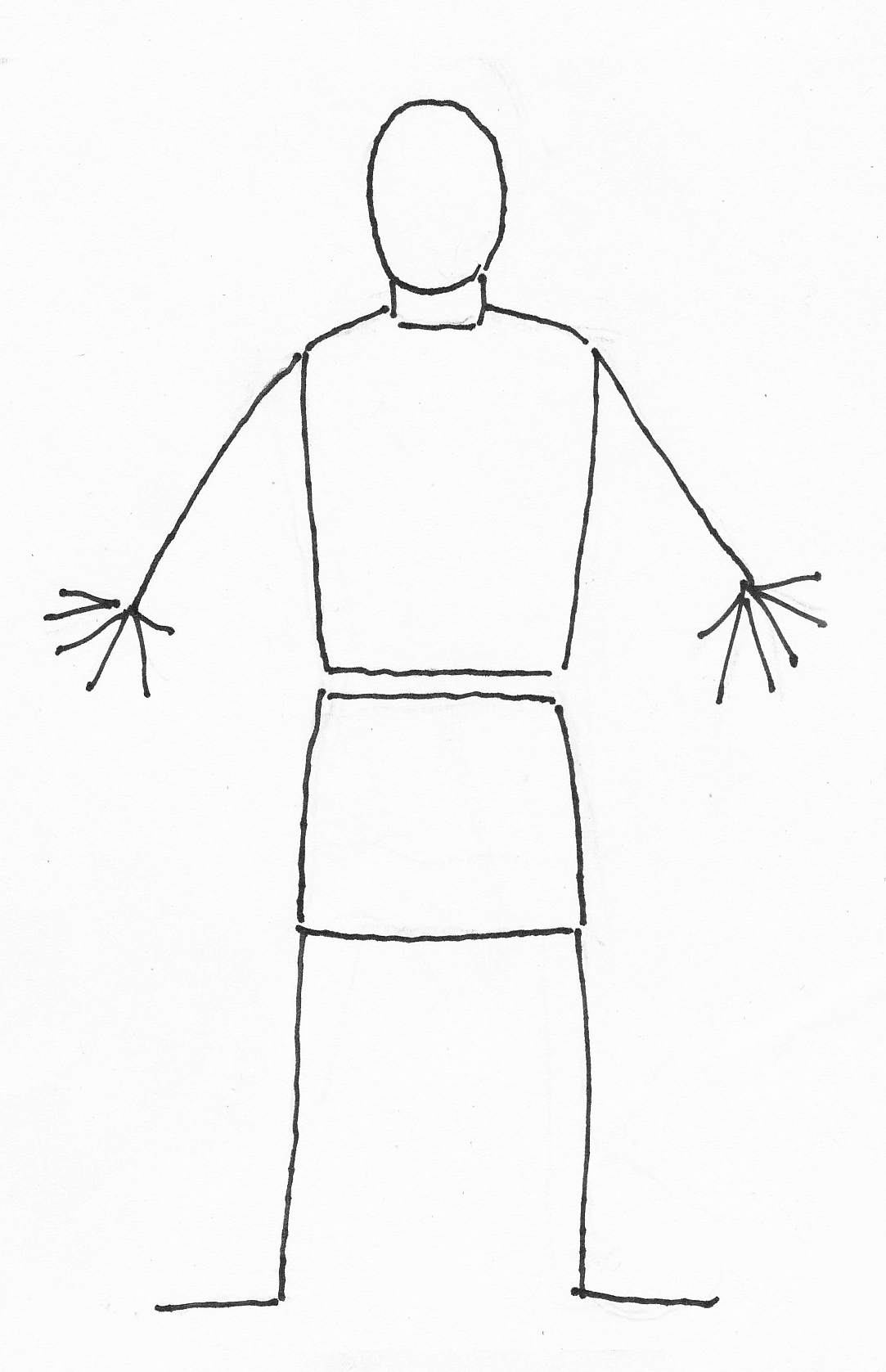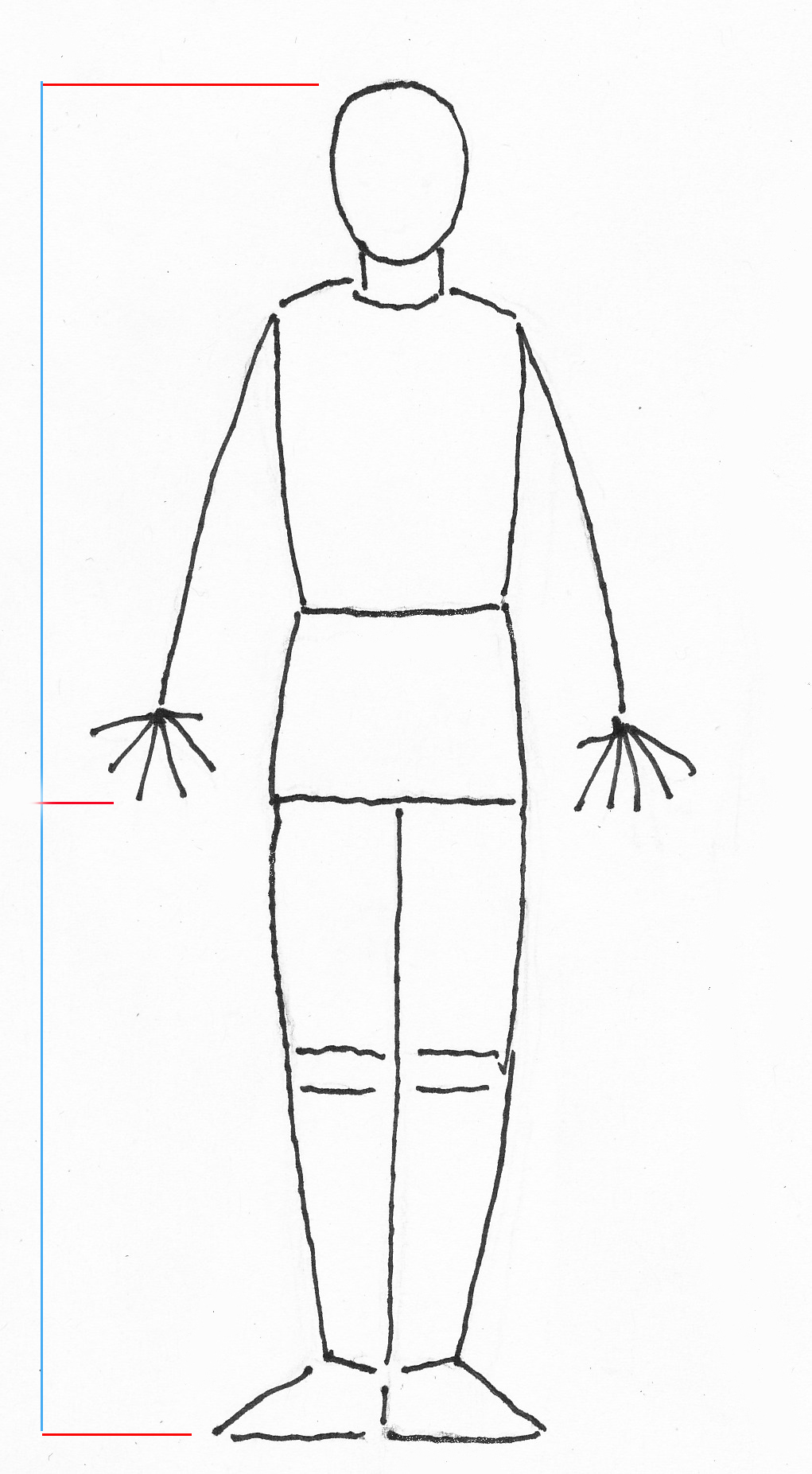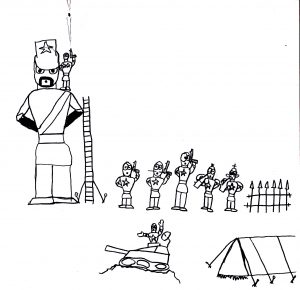Chapter 1 | THE HUMAN FIGURE


There is nothing wrong with a stick figure, but it is also fun to turn it step by step into a real human figure.
Exercise 1: draw steps 1 to 4. For each step you make a new drawing in which you transform more and more of the stick figure/puppet into a human figure.

Step 1: draw the stick figure.
Step 2: In a new drawing turn the egg shaped body of the stick figure into a real torso. The upper part of the torso is where your chest, back, heart, ribs and your lungs are. The bottom part is for your stomach, your buttocks and your hips. Your soft waist is right in between, you can easily feel that in yourself. Furthermore, the head is drawn egg-shaped and a neck has been added.

Step 3: In another new drawing, give the stick figure real legs. Our legs are about the same length as the rest of our body. Upper legs are thicker than lower legs. When you stand and hold your feet together, your legs together will be narrower at the bottom than at your hips. Just check with yourself. Also draw the location of the knees where you can bend your legs.

Step 4: Finally give the stick figure real arms. The arms come from the shoulders. The upper arms are thicker than the forearms. If you let your arms hang, they will certainly reach your thighs. Check with yourself when you stand. The arms can bend at the elbow and wrist. Now you have drawn a real model figure of a human.

The skeleton with added contours in red shows that the model figure you’ve just drawn is really correct.

Here, a 6th grade primary school pupil (age about 8-9 years) has used the model figure from this lesson for a general and his soldiers. To show how important he finds the general, he has drawn him much larger. The soldiers need a ladder to climb onto his shoulder. In each figure he has drawn the torso in particular very consistently, with a chest and stomach/hip section.

Sleeping bag figures
An easy and quick way to draw standing human figures in a very simplified way is to put them in a kind of sleeping bag. Only the head and possibly the feet stick out. Then you could make a separation between the upper body and the legs. These kinds of sleeping bag figures can be very functional in some drawings. See for example the lessons Perspective part 1 and 2, level 3.
Exercise 2: Try to draw a few of these sleeping bag figures. Make sure the head is egg-shaped.
.

